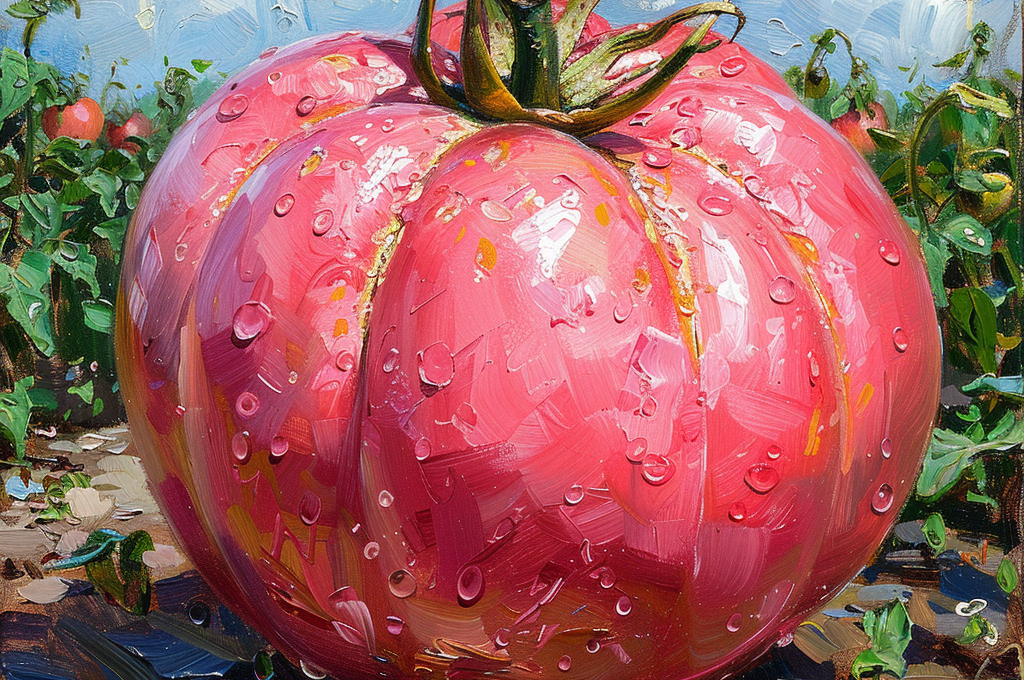Please note that some of the links on this website are affiliate links. I will earn a commission if you decide to make a purchase after clicking through the link. As an Amazon Associate I earn from qualifying purchases.
The Brandywine Tomato: An Heirloom Classic with Unmatched Flavor
The Brandywine tomato is synonymous with heirloom gardening, offering a unique combination of size, taste, and history. With its distinctive pinkish-red hue and irregular shape, this variety stands out in gardens and farmers’ markets alike. Here’s a comprehensive fact sheet that explores the Brandywine tomato, including its origins, growth characteristics, nutritional benefits, and culinary uses.
What Is the Brandywine Tomato?
The Brandywine tomato is one of the most famous heirloom tomato varieties, known for its large, beefsteak-like size and exceptional flavor. It typically weighs between one and two pounds, with some specimens exceeding two pounds. The fruit is generally round but can be irregularly shaped, often with ribbed shoulders. Its flesh is meaty, with fewer seeds than typical tomato varieties, making it ideal for slicing and cooking.
The History of the Brandywine Tomato
The Brandywine tomato’s origins are a bit mysterious, but it’s generally believed to date back to the late 1800s. It was named after the Brandywine Creek region in Pennsylvania and gained popularity among gardeners and tomato enthusiasts for its unparalleled flavor and appearance. As one of the early heirloom varieties to gain widespread recognition, the Brandywine has become a symbol of the heirloom gardening movement, emphasizing open-pollinated seeds and traditional growing practices.
Growing the Brandywine Tomato
Brandywine tomatoes can be a bit challenging to grow, but with proper care, they can yield impressive results. Here’s what you need to know:
- Indeterminate Growth: The Brandywine is an indeterminate tomato, meaning it continues to grow and produce fruit throughout the season. This requires proper staking or caging to support its sprawling vines.
- Climate and Conditions: This variety prefers warm temperatures and thrives in full sun. It requires well-drained, nutrient-rich soil and consistent watering to prevent fruit splitting.
- Pruning and Maintenance: Regular pruning helps ensure good air circulation and reduces the risk of diseases. Removing suckers and excess foliage encourages better fruit production.
Nutritional Benefits of the Brandywine Tomato
Brandywine tomatoes offer a range of nutritional benefits:
- Rich in Vitamins: They contain high levels of vitamins C and A, which are essential for a healthy immune system and vision.
- Antioxidants: Like other tomatoes, the Brandywine contains lycopene, a powerful antioxidant with potential health benefits, including reduced risk of certain cancers and heart disease.
- Low in Calories: With only about 22 calories per 100 grams, Brandywine tomatoes are a healthy addition to any meal.
Culinary Uses for the Brandywine Tomato
The Brandywine tomato’s large size and rich flavor make it a favorite in the kitchen. Here are some popular ways to use this heirloom variety:
- Sliced and Served Fresh: The Brandywine’s meaty texture and rich flavor make it ideal for slicing into sandwiches or salads. It pairs well with fresh mozzarella and basil for a classic caprese salad.
- Roasted or Grilled: Roasting or grilling brings out the tomato’s natural sweetness, adding depth to dishes like roasted tomato soup or grilled tomato bruschetta.
- Sauces and Salsas: The Brandywine’s meaty flesh and lower seed count make it a great choice for tomato-based sauces and salsas.
Conclusion
The Brandywine tomato is a beloved heirloom variety known for its size, flavor, and historical significance. Although it requires a bit more care in the garden, the results are worth the effort. Whether you’re growing them at home or buying them from a local farmers’ market, the Brandywine tomato is sure to bring a burst of flavor to your dishes and a touch of tradition to your garden.












